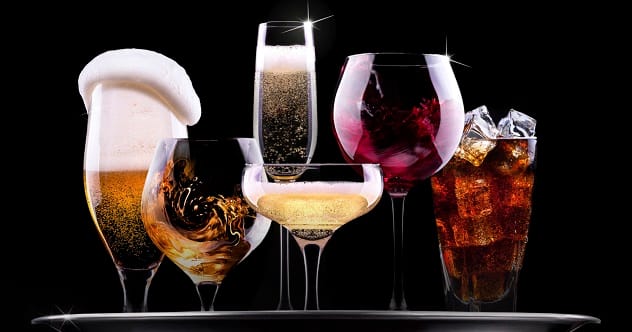We all enjoy a good cocktail, whether it’s the clinking of ice in a shaker or the colorful presentation in a fancy glass. But have you ever wondered about the history behind your favorite drink? Cocktail history can be hazy and sometimes contradictory when it comes to who created what. Let’s dive into the fascinating stories behind ten classic cocktails.
Manhattan
Forget the myth about Winston Churchill’s mother inventing the Manhattan. The real story is much simpler. William F. Mulhall, a bartender at New York’s Hoffman House, stated that a man named Black invented the Manhattan in the 1860s, near Houston Street on Broadway. Despite the truth, the Manhattan Club still likes to claim the Churchill story!
Margarita
With over half a dozen origin stories, the Margarita’s history is a bit muddled. However, the most plausible explanation is that it evolved from the “Daisy” cocktail, which was originally made with brandy. When Americans crossed the border during Prohibition, they substituted tequila for brandy, and thus, the Margarita was born. Margarita simply means “Daisy” in Spanish!
Pina Colada
The Pina Colada’s roots can be traced back to Puerto Rican pirate Roberto Cofresi, who gave his crew a mix of coconut, pineapple, and rum. However, the more concrete story points to Ramon “Monchito” Marrero, who created the recipe while working at the Caribbean Hilton Hotel. His creation coincided with the invention of Coco Lopez, a key ingredient. The Puerto Rican government considers Monchito and the bar national treasures.
Aviation
The Aviation, a cocktail known among bartenders, was first mixed by Hugo Ensslin at the Hotel Warwick in New York in 1916. While some recipes omit crème de violet, the original recipe has seen a resurgence, appreciated by younger generations for its refreshing and unique taste.
Mint Julep
Originally, cocktails were considered medicinal. The Mint Julep was no exception. Southern farmers drank it in the morning instead of coffee. Its earliest mentions date back to the 1780s. It gained fame as the official cocktail of the Kentucky Derby in 1938. The word “julep” comes from the Persian word “galub,” meaning “flavored rosewater.”
Sidecar
While both London and Paris claim the Sidecar, this cocktail likely originated in New Orleans. Legend has it that an American army captain in Paris after WW1 ordered a drink and specified the ingredients. It’s believed that he was actually ordering a “Brandy Crusta” that dates back to 1862.
Vieux Carre
Pronounced “voo-ca-ray,” this New Orleans cocktail, meaning “French Quarter,” fell out of favor in the 70s and 80s but has made a comeback. Walter Bergeron invented it in 1938 at the Hotel Monteleone. The hotel bar is famous for its custom-carved rotating carousel.
Gin & Tonic
Gin & Tonic played a role in the British Empire’s expansion. Gin was initially created as a medicinal elixir in Holland. Quinine syrup, derived from the cinchona tree, was found to prevent malaria. British soldiers mixed this medicinal tonic with their gin rations, creating a global phenomenon.
Sazerac
Returning to New Orleans, the Sazerac is named after a French cognac. Aaron Bird created the cocktail at the Sazerac Coffee House with the help of Antione Amedie Peychaud, the inventor of Peychaud bitters, in the 1850s. Absinthe was added in the 1870s, and rye whiskey replaced cognac after a plague affected French vineyards. Peychaud is also credited with the word “cocktail,” using a double-sided egg cup called a “coquetier” to measure ingredients.
Old Fashioned
During Prohibition, many cocktails were ruined by excessive sweeteners. An Old Fashioned should simply contain a large piece of ice and a cherry. The recipe first appeared in 1862, and James E. Pepper brought it from Louisville, Kentucky, to the Waldorf-Astoria in NYC. It’s considered the purest form of a cocktail: bitters, sugar, and booze.
So, the next time you enjoy one of these classic cocktails, you’ll know a bit more about its rich and varied history.










